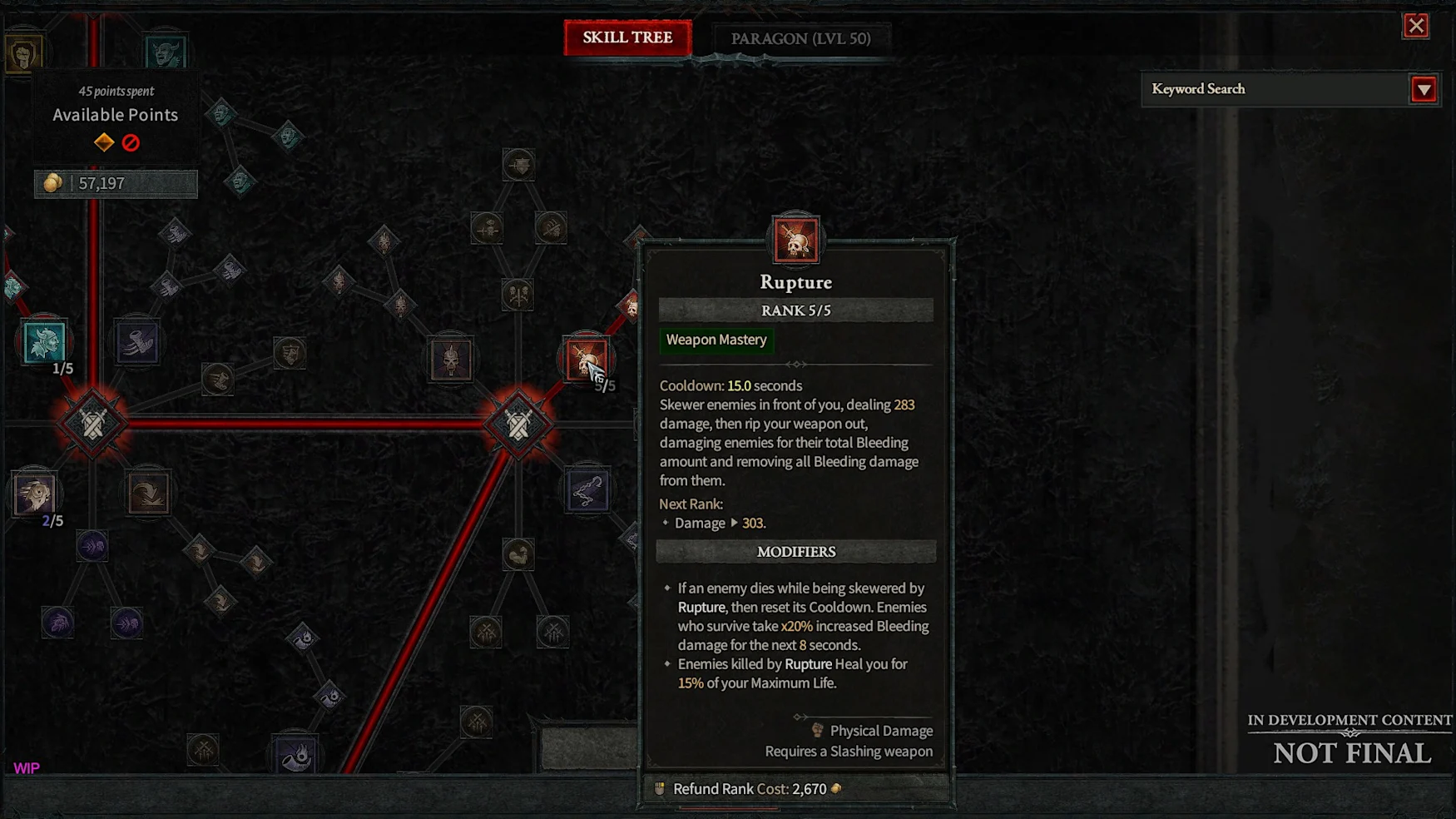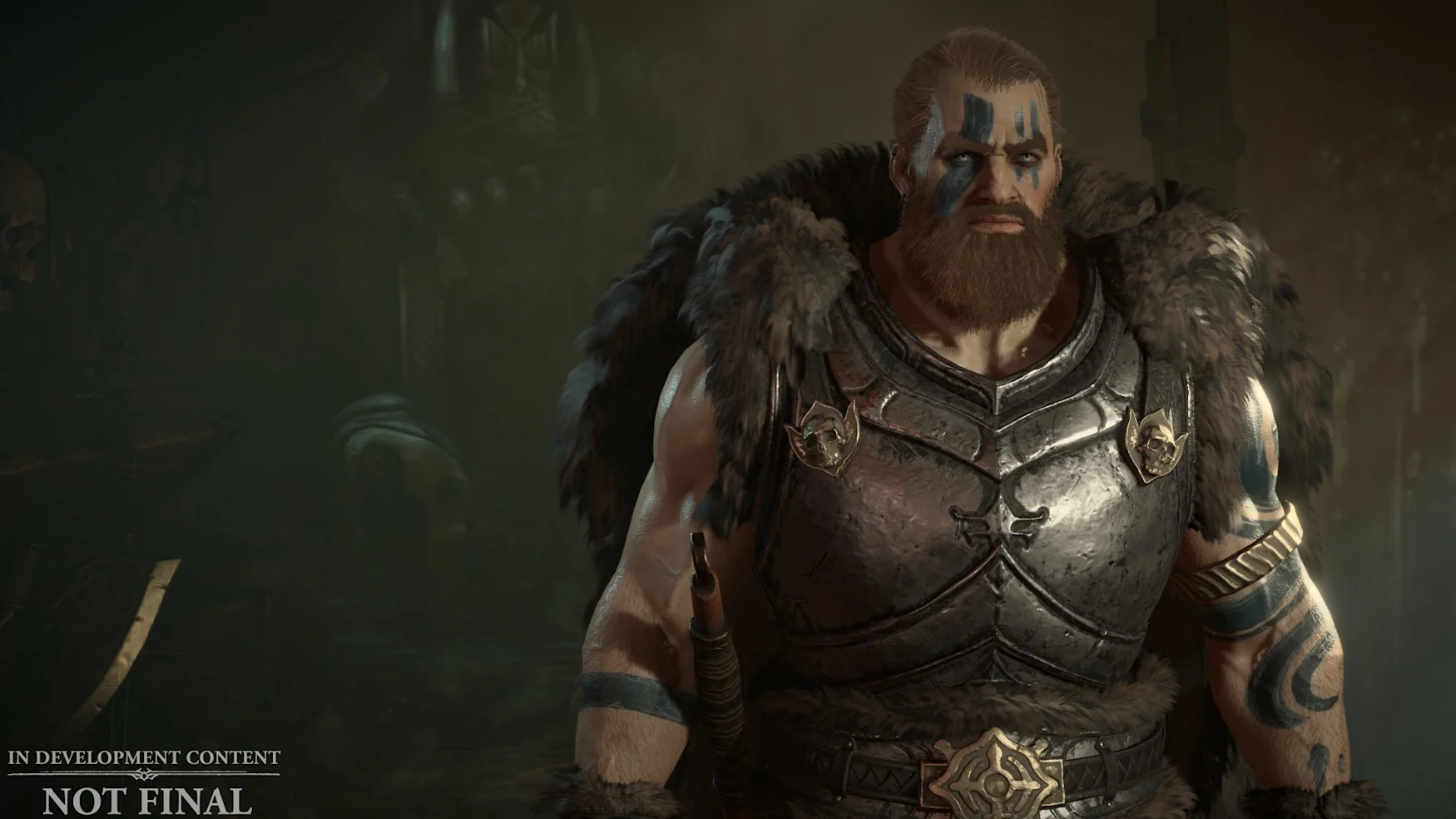‘Diablo IV’ hands-on: This feels worryingly good
About three hours into my preview of Diablo IV, I stumble upon the body of a dead priest. The discovery adds a quest to my journal to visit nearby Margrave. A short while later, I find a small village worn down by constant snowfall and all the monsters and bandits that lurk outside its palisade walls. Despite the town’s desperate state, there are signs of warmth and humanity everywhere.
By the south entrance, I find a woman praying for her deceased husband. She tells his gravestone how she can’t sleep now that no one is snoring at night. Nearby, a man tells his adopted son not to venture outside the town’s walls. I love these details. They remind me of some of my favorite moments playing Diablo II.
Whenever I went back over the years to revisit the action RPG on my own, I would listen to everything the non-playable characters had to say. The game doesn’t have much dialogue by modern standards, but if you pay attention, it says a lot with very little. Looking back at my time with Diablo III and, more recently, Diablo Immortal, what stands out is that those games rarely, if ever, slow down to take a breath.
Blizzard
Diablo IV feels different. It feels like a game that was designed by people who love the history of this franchise as much as I do. That might not seem like much, but it’s refreshing when you consider Diablo III’s original lead designer called his Diablo II predecessor a “loser.”
“Certainly, there are a lot of things about Diablo II that we think are really cool and need to be in Diablo IV, particularly when you look at the depth of systems and itemization… and, as you noted, there are things about Diablo III like the smooth and seamless combat that we wanted to bring forward to Diablo IV,” game director Joe Shely tells me during a roundtable interview. Shely took over leadership of the Diablo IV team in the fall of 2021 after the game’s previous director, Luis Barriga, left Blizzard when California’s fair employment agency accused the studio of systemic gender discrimination and sexual harassment. “We think Diablo IV can be a place that welcomes players from any previous Diablo game and people who have never played a Diablo game.”

Blizzard
Diablo IV existing as a project that takes all the best aspects of past entries in the series and iterates on them in meaningful ways is a theme Shely and his boss, Diablo franchise head Rod Fergusson, repeat early and often. At first, I dismissed it as marketing, but after playing the game for about a dozen hours, I started to believe them.
Take combat, for instance. Carrying over a change Blizzard made for the console release of Diablo III, each class comes with a dodge ability built into their kit. At first, you can only use your dodge once before it goes on cooldown, but as you level your character, you’ll find magical and rare boots that give you additional charges.
The potion system, meanwhile, represents a hybrid of the systems that existed in Diablo II and III. When you first start playing, your character can carry a maximum of five potions on them. There’s no cooldown after you use one, and you gain refills by slaying enemies or bringing a boss down to certain thresholds of their health. Walking over a potion when your character is at max health won’t automatically heal you as it did in Diablo III, so there’s more strategy involved. As you might have guessed, you can upgrade the potency of your potions and find ways to carry more as you progress through the game.

Blizzard
On the surface, these are minor changes, but they add some much-needed tactical depth to Diablo’s combat, so you’re not just mindlessly clicking and spamming your skill rotation. Most larger enemies have a windup attack in their arsenal to stagger your character. Combine that with elite and champion variants of enemies that can use abilities like frost to trap you in place, and combat encounters feel more involved in Diablo IV than in past games. Playing on the game’s veteran world tier difficulty, I had the most success when I used my barbarian’s leap ability to close the distance quickly on ranged enemies and monsters like fallen shamans that could bring their comrades back from the dead.
All of that made for a fun and satisfying combat loop enhanced by how much the game encouraged me to experiment with my character’s build. Diablo IV sees the return of Diablo II’s skill trees, but this time around, you’re not limited to respecing your character once per difficulty. Instead, you can at any time refund a single skill point or all of them simultaneously to tweak your build. At first, doing so only costs a few gold coins, but the price increases as you level your character. The beauty of this system is that you’re free to experiment early before settling on the build that will take you through Diablo IV’s endgame activities.
Unfortunately, I only had enough time to play through the demo with the barbarian. The preview also came with access to the rogue and sorcerer classes. At launch, the final game will feature five classes, adding the druid and necromancer to the mix.
I wish I could write about the story, but Blizzard asked those of us taking part in the preview not to spoil anything. What I can say is that once you complete Diablo IV’s prologue, you can tackle its primary acts in any order you want. The preview build only came with access to act one and the Fractured Peaks zone where that part of the story takes place. When Blizzard revealed Diablo IV in 2019 by sharing the game’s gruesome “By Three They Come” intro cinematic, I was worried the story would end up being edgy instead of mature and dark.
The little I’ve seen of the plot has done a lot to address those concerns. Part of that has been thanks to the smart, restrained writing I saw and Diablo IV’s willingness to give its narrative time to breathe, but the thing I think that’s going to surprise a lot of people is how atmospheric Diablo IV can be in its best moments. All of the trailers Blizzard has released so far don’t do nearly enough justice to all the great work the art team has done with the environmental, lighting and particle effects in the game. When my barbarian first began his adventure on a mountain beset by a blizzard, I reached for a blanket.
One thing the demo didn’t include was a preview of Diablo IV’s monetization system. Blizzard provided an overview of those this past summer. The short version is that the game won’t include pay-to-win microtransactions. Instead, an in-game cosmetic shop will allow you to buy items you can use to customize the look of your characters further. Seasonal battle passes will allow you to earn additional cosmetics. From the moment you create your character, the customization systems are robust, offering you plenty of options to alter their physical appearance, including things like skin tone, head and facial hair, as well as jewelry.

Blizzard
Additionally, the way you can modify the appearance of items is as fleshed out. For instance, if you use the transmog system to make a piece of armor look different, and then an item with better stats drops for you, you can match it with your previous set directly from the character sheet. By level 10, my barbarian had already started to look menacing.
If there’s one worry I have about Diablo IV, it’s the same one I’ve had with every Blizzard game in the past decade or so: Can the studio stick the landing? To say Blizzard’s recent output has been all over the place would be an understatement. I’m still disappointed with how it handled remastering my favorite RTS of all time. The studio will have the chance to reassure fans in early 2023 when Diablo IV’s open beta begins ahead of the game’s official launch later in the year.
All products recommended by Engadget are selected by our editorial team, independent of our parent company. Some of our stories include affiliate links. If you buy something through one of these links, we may earn an affiliate commission. All prices are correct at the time of publishing.
For all the latest Technology News Click Here
For the latest news and updates, follow us on Google News.
